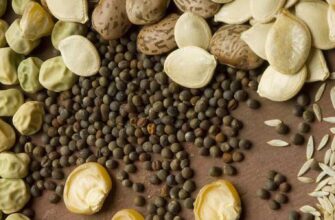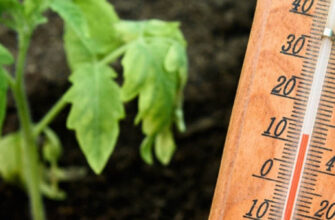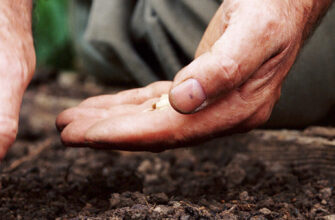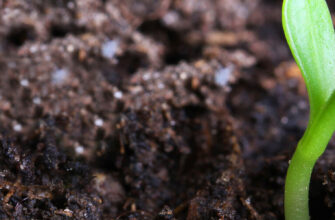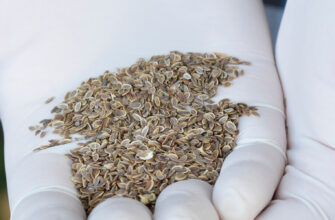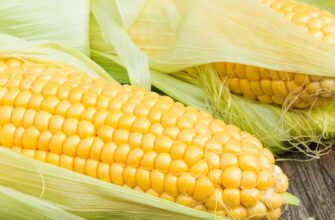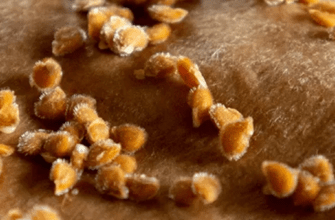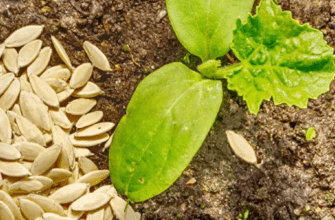Every gardener has, at some point, saved leftover seeds for the winter, eagerly anticipating the next planting season. Upon spring, they sow those seeds with excitement, waiting for sprouts to emerge. But after waiting a bit longer, they often realize the stored seeds are no longer viable. This leads to a disappointing start to the gardening season, putting you behind schedule.
In this article, we’ll explore how to save seeds for next year to ensure they remain viable for planting. Whether you’re storing vegetable seeds like cucumbers, tomatoes, peppers, melons, or dill, or even flower seeds, proper storage is key to success.
- Factors Affecting Seed Storage
- How to Store Seeds
- How to Store Cucumber Seeds
- How to Store Tomato Seeds
- How to Store Pepper Seeds
- How to Store Melon Seeds
- How to Store Dill Seeds
- How to Store Garlic Seeds
- Where to Store Seeds
- How Long Do Seeds Last
- How Long Can Vegetable Seeds Be Stored?
- For How Long Can The Seed Be Preserved
Factors Affecting Seed Storage
Like all organic matter, seeds degrade over time. In school biology classes, we learned about the three main components of a seed:
- The seed coat (the hard outer shell of the seed);
- The embryo (the young plant inside);
- The endosperm (the food source for the embryo).
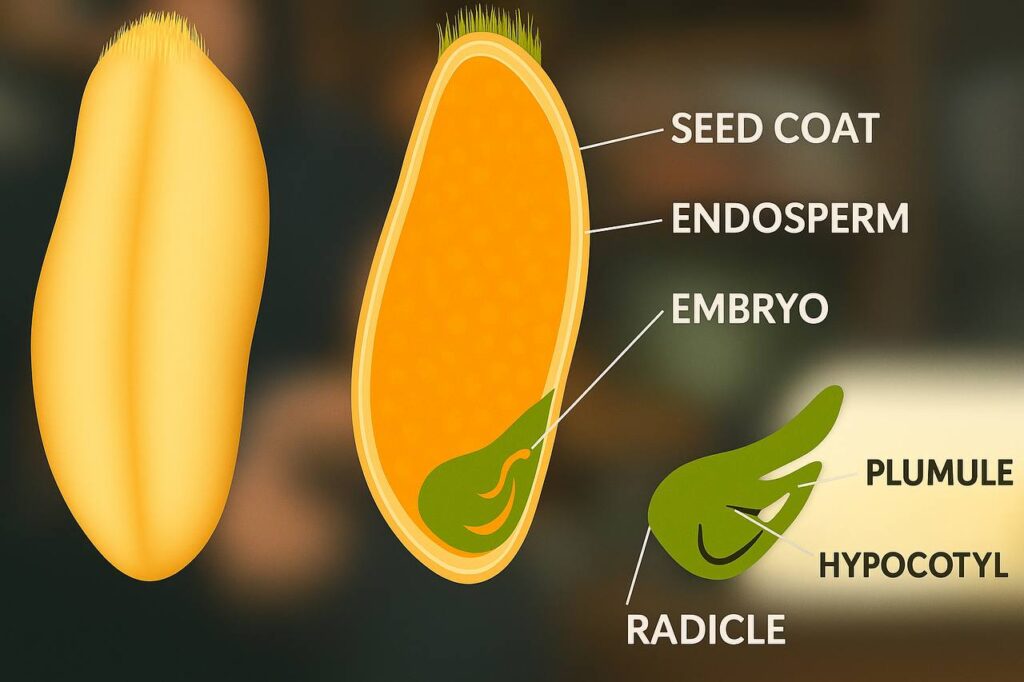
The plant inside the seed remains in a dormant state, encased in its tough outer coat. Improper storage can disrupt this dormancy, making it difficult for the seed to “sleep,” which may cause it to attempt germination prematurely.
Maintaining this dormant state is crucial, but even so, the endosperm will gradually break down, much like any other food source. The endosperm primarily consists of starch, which can last a long time but will eventually decompose. Additionally, some seeds are rich in oils, which can spoil over time. These oil-rich seeds often have the shortest lifespan.
The conditions required for effective seed storage are the opposite of those needed for successful germination. Germination occurs when water, oxygen, and a favorable temperature are present. However, when seed moisture levels and storage temperatures are kept low, the presence of oxygen does not significantly affect seed longevity during storage.
Let’s take a closer look at the factors affecting seed storage and their impact on seed viability.
Light
Sunlight is a natural enemy of many organic materials, and this is especially true for seeds. Light can awaken the tiny plant inside the seed, triggering germination. To prevent this, it’s critical to store seeds in darkness for as long as possible. Opaque containers are highly effective for this purpose, but if those aren’t available, storing seeds in a dark room can help minimize light exposure.
Moisture
Soil does more than just provide nutrients for plants—it also holds water close to the roots, allowing plants to absorb it. Similarly, moisture encourages seeds to germinate. After all, when seeds are buried beneath the soil’s surface, light may not penetrate, but water is almost certainly present.
Excess moisture can soften the seed’s outer coat, leading to rot. If you’ve collected seeds yourself, it’s essential to ensure they are completely dry. First, avoid harvesting seeds right after rain; wait until they’ve dried on the plant. Second, after collection, further dry the seeds in the sun or using another convenient method.
Temperature
Alongside moisture, soil temperature signals to seeds that it’s time to germinate. However, seeds cannot distinguish between being planted in fertile soil and being stored in a paper packet.
Since most plants germinate at temperatures above 15°C (59°F), storing seeds in a cooler environment can help prevent premature germination.
How to Store Seeds
Seeds should be stored in paper or foil packets, matchboxes, or any convenient container. These packets can then be placed in jars or larger containers. Always label the packets with the crop name, variety, and collection date, as it’s easy to forget these details by the next planting season.
Tip: Create a seed catalog. Organize packets in containers by crop type and expiration date. This way, you won’t need to sort through your seeds again the following year and can start planting right away.
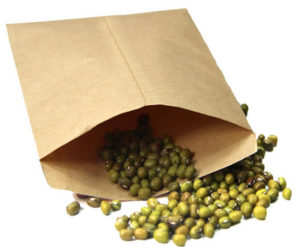
Adding a small amount of silica gel desiccant to each container can absorb moisture from the air, helping to keep seeds dry. Silica gel packets, often found in shoeboxes, can also be purchased from specialty stores.
Alternatively, dry milk powder can serve as an effective desiccant. Wrap 1–2 tablespoons of dry milk powder in a piece of cheesecloth or a napkin and place it in the container with the seeds. This homemade desiccant will absorb excess moisture from the air for about six months, supporting seed longevity during storage.
How to Store Cucumber Seeds
To preserve cucumber seeds for future planting, several key conditions must be met. First and foremost, the seeds must be thoroughly dried. Store them in airtight containers, such as glass or plastic bottles, or in paper packets, to protect their quality.
The ideal storage temperature for cucumber seeds is between +5°C and +10°C (41°F to 50°F). If possible, place the containers with the seeds in a cool basement or cellar. This will help maintain high germination rates over an extended period, ensuring the seeds remain viable. Before planting, calibrate the stored seeds, disinfect them, or treat them with growth stimulants if they haven’t been pre-treated.
How to Store Tomato Seeds
To keep tomato seeds viable for as long as possible, several key conditions must be met. In the area where tomato seeds are stored, the air temperature should be maintained between +10°C and +15°C (50°F to 59°F). This temperature range ensures the seeds remain dormant, preserving their quality for future planting. If the storage space experiences temperature fluctuations, it’s best to store the seeds in a refrigerator to maintain a stable environment.
The ideal humidity level is between 30% and 40%, with a maximum of 55%. Excessive humidity can cause the seeds to become damp and moldy, while overly dry conditions may cause them to dry out and lose viability. To avoid these issues, store the seeds far from heaters or other heat sources that could affect moisture levels.
Lighting also plays an important role in seed storage, as exposure to light can trigger germination. To prevent this, store tomato seeds in a dark place.
How to Store Pepper Seeds
Pepper seeds can maintain their germination potential for 2 to 5 years if stored properly. To ensure the seeds remain viable for future planting seasons, several key conditions must be met. Similar to other plants, the ability of pepper seeds to germinate is affected by humidity and temperature.
Seeds of both sweet and hot peppers should be kept in a cool, dry environment at a temperature of +10°C to +12°C (50°F to 54°F), ideally in paper packets. It’s important to prevent the storage area’s temperature from dropping to 0°C (32°F), as this can damage the seeds and render them unusable. Likewise, excessively high temperatures can harm the seeds, reducing their chances of successful germination.
Humidity in the storage area should be maintained at 55–60%. Care must be taken to avoid conditions that are too damp, which can lead to mold, or too dry, which can cause the seeds to lose viability. Before planting in the spring, sort through the seeds and, if needed, treat them with fungicides.
Tip. When collecting hot pepper seeds yourself, you don’t need to remove them from the pod right away. In autumn, hang the fruits on a string in a dry, well-ventilated place, and extract the seeds in spring.
How to Store Melon Seeds
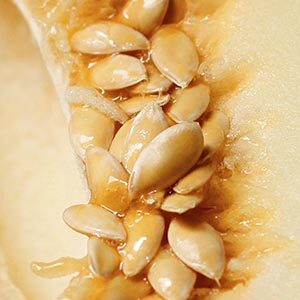
High-quality melon seeds are essential for producing a bountiful harvest of sweet, flavorful fruits. Seeds sold in professional stores undergo calibration and drying before being stored in specialized refrigeration units until purchase. However, some gardeners prefer to collect their own seeds.
Melon seeds should be collected from ripe fruits, carefully washed to remove any pulp, and spread out in a thin layer in a warm, well-ventilated area where the temperature does not exceed +35°C (95°F). This drying process helps preserve the seeds’ quality and prepares them for storage.
Once dried, the seeds should be packaged in paper packets or cloth bags. For long-term storage, consider placing them in glass bottles or airtight containers to protect them from environmental factors.
The ideal storage conditions for melon seeds include maintaining humidity levels between 50–60% and a temperature range of +14°C to +16°C (57°F to 61°F). Excessive humidity or higher temperatures can negatively impact seed quality, potentially causing them to become damp and spoil. Before sowing self-collected seeds, test their germination rate to determine how many seeds to plant for the desired yield.
How to Store Dill Seeds
To prepare dill seeds for storage, wait until they have fully dried on the plant and turned a rich brown color. During harvesting, cut the seed heads (umbels) and spread them out in a warm, well-ventilated area to ensure thorough drying.
Some gardeners suggest drying the seeds in a microwave or oven at 100°C (212°F). While this method may dry the seeds quickly, it renders them unsuitable for planting, as the high heat can damage their viability. Seeds treated this way are better suited for culinary use or making herbal infusions.
For optimal storage, maintain a temperature of +8°C to +10°C (46°F to 50°F) and a humidity level of 50–60%. Store dill seeds in a cool, dark place, such as the bottom shelf of a refrigerator or a shaded room with no light exposure. Place the dried seeds in glass jars, paper packets, or breathable cloth bags. Avoid tightly sealed containers, as dill seeds need some air circulation to prevent suffocation and ensure they remain viable.
How to Store Garlic Seeds
Garlic seeds, commonly known as bulbils or air bulbs, must be stored in a dry, dark environment at a temperature of at least +18°C to +20°C (64°F to 68°F). Wrap the bulbils in newspaper and place them in cardboard boxes or crates. There are various methods for storing garlic bulbils effectively.
The key is to prevent them from becoming too dry or absorbing excess moisture. One effective technique involves storing them in flour or ash. Place a 2–4 cm layer of flour or ash in a container, arrange the garlic bulbils tightly on top, and cover them with another layer of flour or ash. This method helps regulate moisture levels and should be done in a space where the temperature remains at or above +20°C (68°F).
To prepare garlic bulbils for planting and promote faster growth through stratification, transfer them to a breathable cloth bag and bury it in snow around February. Before sowing, dry the bulbils, sort them carefully, and disinfect them in a dilute potassium permanganate solution.
Where to Store Seeds
To ensure seeds remain viable for planting, containers holding seeds should be placed in a dry, cool location with no humidity. A suitable spot might be the top shelf of a kitchen cupboard or any other room where the temperature does not exceed +20°C (68°F).
Another effective option is to store seeds in the refrigerator on the bottom shelf. What is the ideal temperature for seed storage in a refrigerator? Seeds should be kept at a temperature range of 0°C to +5°C (32°F to 41°F). However, even slight temperature fluctuations can reduce seed germination rates.
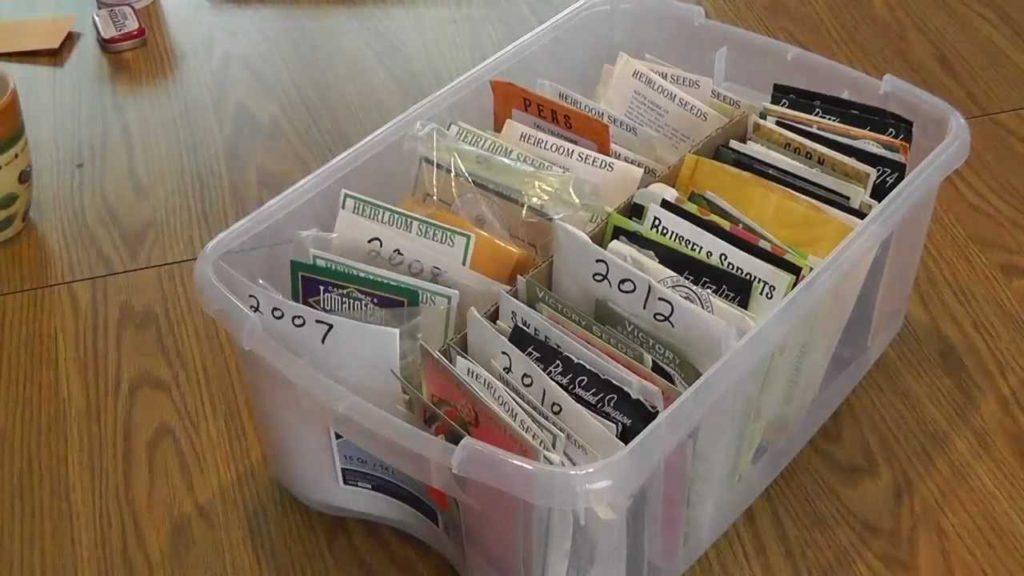
For long-term storage, seeds can be frozen in a freezer. For this method, place dry seeds in glass jars and store them at a temperature of -15°C (5°F) or lower. When preparing to use frozen seeds, remove the jar from the freezer and let it sit at room temperature for 12 hours to prevent condensation from forming inside.
Afterward, open the container and allow the seeds to air out for a few days. Avoid thawing seeds more than once, as this can completely compromise their viability.While freezing is an effective method, it comes with risks. If the freezer breaks down or there’s a power outage, the seeds may lose their germination potential.
Interesting Fact: In 1954, archaeologists discovered Arctic lupine seeds near a river, preserved in a frozen state for over 10,000 years. Scientists stored these seeds in a laboratory for 12 years, and when a Canadian botanist attempted to germinate them, they grew into healthy, normal plants.
Specialized seed banks use advanced techniques like rapid dry freezing to preserve seeds. These facilities rely on large freezers opened no more than twice a year and are equipped with backup generators to ensure stability. Home gardeners, however, lack access to such sophisticated equipment.
Important: Never store chemically treated seeds alongside vegetables or other food products to avoid contamination.
How Long Do Seeds Last
As seeds age, their germination rate naturally decreases. All seeds will remain viable for at least one year, but with proper storage, many types can stay viable for much longer.
How Long Can Vegetable Seeds Be Stored?
The shelf life of vegetable seeds varies by crop. Below is a list of common vegetables and their typical storage duration under optimal conditions:
| Crop | Storage Duration (Years) |
| Watermelon | 6-8 |
| Eggplant | 4-5 |
| Beans | 5-6 |
| Peas | 5-6 |
| Melon | 6-8 |
| Zucchini | 6-8 |
| Cabbage (all types) | 4-5 |
| Corn | 1-2 |
| Onion | 3-4 |
| Carrot | 3-4 |
| Cucumber | 6-8 |
| Parsnip | 1-2 |
| Pattypan squash | 6-8 |
| Pepper | 1-2 |
| Parsley | 3-4 |
| Radish | 4-5 |
| Daikon radish | 4-5 |
| Turnip | 4-5 |
| Arugula | 3-4 |
| Beet | 3-4 |
| Celery | 3-4 |
| Tomato | 4-5 |
| Pumpkin | 6-8 |
| Dill | 3-4 |
| Green beans | 5-6 |
| Spinach | 3-4 |
| Sorrel | 3-4 |
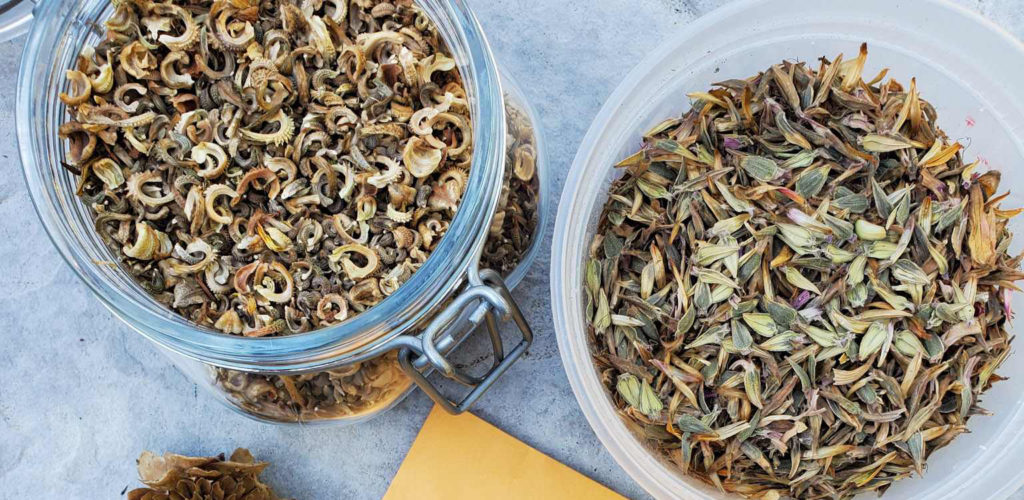
For How Long Can The Seed Be Preserved
| Flower | Storage Duration (Years) |
| Arctotis, aster, verbena, gazania, helichrysum, godetia, calendula, kochia, foxglove | 1-2 |
| Ageratum, viola, gaillardia, annual dahlia, delphinium, iberis, bellflower, lobelia, ornamental sunflower, portulaca, scabiosa, ornamental tobacco, chrysanthemum, zinnia | 2-3 |
| Carnation, lavatera, snapdragon, ornamental poppy, nemesia, penstemon, hollyhock, eschscholzia | 3-4 |
| Marigold, sweet pea, cosmos, lupine, nasturtium, petunia, salvia, salpiglossis, sage | 4-5 |
| Alyssum, balsam, cornflower, matthiola | 5-6 |
| Amaranth, celosia | 6-8 |
Should You Plant Expired Seeds?
Whether to sow expired seeds is a personal decision. An expired shelf life doesn’t necessarily mean the seeds won’t germinate, but it does indicate that the germination rate may be significantly lower. Planting expired seeds might take up valuable garden space and time without yielding the desired results.
Tip: Instead of discarding expired seeds, scatter them in an area behind your house or in wild sections of your garden or yard. Occasionally, these seeds can still produce a crop, and you might be delighted to find unexpected vegetables or flowers blooming in surprising places.
Whether you’ve collected seeds from your own garden or purchased them, knowing how to store seeds for extended preservation is essential.
If you have found a spelling error, please, notify us by selecting that text and pressing Ctrl+Enter.

